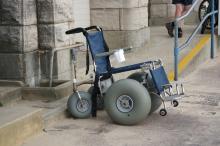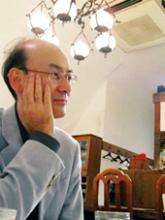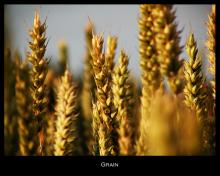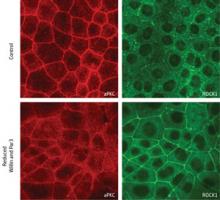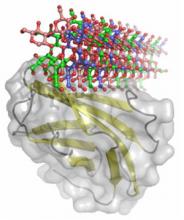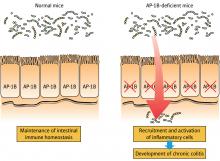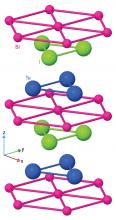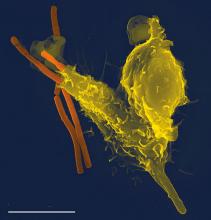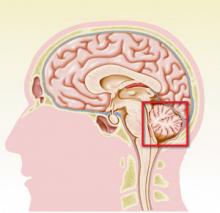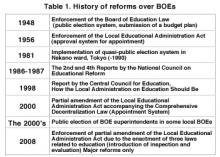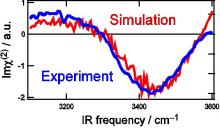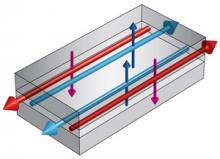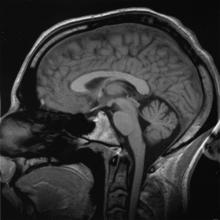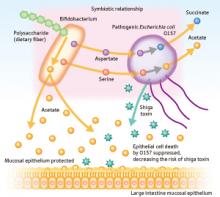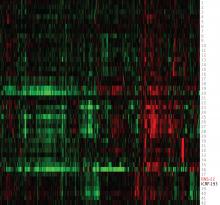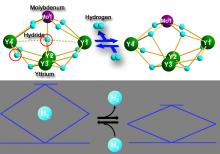Japan
News
25 Oct 2011
How cellular biology is taught in Waseda University
25 Oct 2011
Waseda commentary on recent organized crime ordinance in Japan
25 Oct 2011
Scholar urge caution from blind reliance on the market to resolve current food crisis
24 Oct 2011
Challenges In Developing Carbon Nanotube Technology, structural analysis of proteins related to neurodegenerative diseases using NMR spectroscopy and more.

21 Oct 2011
Ontological systems under development at the RIKEN BioResource Center promise to revolutionize life science research by completely changing the way researchers share data
21 Oct 2011
By relocating a protein that causes cellular constriction, a factor tentatively linked to growth also helps cells retain their natural shape
21 Oct 2011
Elucidation of the structure of receptors that detect invading pathogens in moths could aid the diagnosis of infectious fungal diseases

14 Oct 2011
On September 9–10, the third Noyori Summer School was held at Kobe Port Island, home to the RIKEN Kobe Institute and the RIKEN Advanced Institute for Computational Science (AICS). The summer school, launched in 2009, provides opportunities for young researchers from around the world to meet RIKEN leaders and interact with one another.
14 Oct 2011
Gastrointestinal inflammation is prevented by a protein sorting factor found in cells lining the gut
14 Oct 2011
A bismuth-based semiconducting material could enable control of electron spin, a crucial requirement for advancing novel devices

07 Oct 2011
RIKEN Omics Science Center is currently seeking a Unit Leader
07 Oct 2011
Specialized motor proteins help control immune activation by physically hauling clusters of signaling receptors to a central site for eventual disposal
07 Oct 2011
Improvements to specialized valves that separate spin and electron currents may lead to higher-density magnetic media
07 Oct 2011
Adding breaks to a training regimen gives rodents an edge in learning new motor skills and provides an improved model for studying memory
05 Oct 2011
Waseda scholar Kiyotake Oki assess the causes behind recent criticism against Boards of Educations in Japan

05 Oct 2011
RIKEN Scientist Yutaka Arimoto, received SCJ President Award
04 Oct 2011
New study sheds light on the mysterious structure of the world’s most common liquid interface
03 Oct 2011
Current flowing along the edges of a promising quantum device is insensitive to its magnetic impurities
03 Oct 2011
A molecular probe that targets a pro-inflammatory enzyme allows visualization of inflammation during brain injury in rats

03 Oct 2011
RIKEN invites applications for the position of Chief Scientist to lead a new laboratory working on The Advanced Science Institute (ASI). Applications from overseas applicants are welcome

03 Oct 2011
The RIKEN Brain Science Institute (BSI) is seeking outstanding neuroscientists for tenure-track Team Leader positions (equivalent to U.S. Assistant or Associate Professor) and for a tenured Senior Team Leader position (equivalent to U.S. Full Professor) to investigate the brain.
03 Oct 2011
Analyzing metabolites in living organisms using NMR spectroscopy is yielding new insights into environmental health and ecology and the development of green innovations at the RIKEN Plant Science Center.

26 Sep 2011
Waseda scholar assess the impact of Arab Spring on the Middle East
23 Sep 2011
The entrapment of antimatter for 16 minutes allows for tests of the foundations of physics
23 Sep 2011
Access to multiple life science databases made easier by a web-based interface and portal developed at RIKEN
23 Sep 2011
A method that rapidly unveils the mode of action of anticancer compounds could soon streamline therapeutic drug discovery
23 Sep 2011
Tohoku University, Japan Science and Technology Agency (JST) and Japan Atomic Energy Agency (JAEA) announced on August 22, 2011 that Kenichi Uchida, a PhD student, and Professor Eiji Saitoh of Tohoku University and their colleagues have succeeded in injecting spin current into a magnetic material by acoustic wave spin pumping.
22 Sep 2011
Researchers at the RIKEN Advanced Science Institute (ASI) has shed light on a class of heterometallic molecular structures whose features point the way to breakthroughs in the development of lightweight fuel cell technology. The structures contain a combination of rare-earth and d-transition metals ideally suited to the compact storage of hydrogen.
20 Sep 2011
The Photovoltaic Materials Unit of the National Institute for Materials Science set a new world record for the highest conversion efficiency in dye-sensitized solar cell under the Research Topic “Device Physics of Dye-sensitized Solar Cells”.
Researchers
Sorry, no researchers coming up for this topic.
Giants in history
Ruby Sakae Hirose (1904 – 1960) was a Japanese-American scientist whose research contributed significantly to our understanding of blood clotting, allergies and cancer.
Haisako Koyama (1916 – 1997) was a Japanese solar observer whose dedication to recording sunspots – cooler parts of the sun’s surface that appear dark – produced a sunspot record of historic importance.
Michiaki Takahashi (17 February 1928 – 16 December 2013) was a Japanese virologist who developed the first chickenpox vaccine.
Toshiko Yuasa (11 December 1909 – 1 February 1980) was the first Japanese female physicist whose research on radioactivity shed light on beta decay – the process in which an atom emits a beta particle (electron) and turns into a different element.
Baron Kitasato Shibasaburo (29 January 1856 – 13 June 1931) was a Japanese physician and bacteriologist whose work led to a new understanding of preventing and treating tetanus, diphtheria and anthrax.
By isolating soil microorganisms and studying the compounds they produce, Satoshi Omura (born 1935) discovered almost 500 organic compounds with unique properties that were produced by these microorganisms, including many new antibiotics.
In 1915, pathologist Katsusaburo Yamagiwa and his research assistant Koichi Ichikawa became the first to prove that chronic exposure to chemicals can cause cancer.
In 1915, Koichi Ichikawa along with pathologist Katsusaburo Yamagiwa became the first to prove that chronic exposure to chemicals can cause cancer.
Reiji Okazaki (8 October 1930 – 1 August 1975) and Tsuneko (7 June 1933) were a Japanese couple who discovered Okazaki fragments – short sequences of DNA that are synthesized during DNA replication and linked together to form a continuous strand.
Tsuneko (7 June 1933) and Reiji Okazaki (8 October 1930 – 1 August 1975) were a Japanese couple who discovered Okazaki fragments – short sequences of DNA that are synthesized during DNA replication and linked together to form a continuous strand.
Husband and wife team, Kimishige (3 December 1925 – 6 July 2018) and Teruko Ishizaka (28 September 1926 – 4 June 2019) discovered the antibody class Immunoglobulin E (IgE) that triggers allergic reactions. They also discovered that IgE antibodies attach to white blood cells, known as mast cells, releasing histamine, which causes allergic reactions.
Husband and wife team, Kimishige (3 December 1925 – 6 July 2018) and Teruko Ishizaka (28 September 1926 – 4 June 2019) discovered the antibody class Immunoglobulin E (IgE) that triggers allergic reactions. They also discovered that IgE antibodies attach to white blood cells, known as mast cells, releasing histamine, which causes allergic reactions.
Japanese chemist Takamine Jokichi (3 November 1854 – 22 July 1922) founded the Tokyo Artificial Fertilizer Company, where he isolated a starch-digesting enzyme (named takadiastase) from the fungus Aspergillus oryzae.
Hideki Yukawa (23 January 1907 – 8 September 1981) was awarded the Nobel Prize in Physics in 1949 for predicting the existence of the pi meson subatomic particle. Japan’s first Nobel laureate, Yakawa also expressed his support for nuclear disarmament by signing the Russell–Einstein Manifesto in 1955.
Shinichiro Tomonaga (31 March 1906 – 8 July 1979), together with Richard Feynman and Julian Schwinger, was awarded the Nobel Prize in Physics in 1965, for their contributions to advance the field of quantum electrodynamics. Tomonaga was also a strong proponent of peace, who actively campaigned against the proliferation of nuclear weapons and promoted the peaceful use of nuclear energy.
Japanese chemist Kenichi Fukui (4 October 1918 – 9 January 1998) was the first Asian scientist to be awarded the Nobel Prize in Chemistry. Together with Roald Hoffman, he received this honour in 1981 for his independent research into the mechanisms of chemical reactions.
Minoru Shirota (April 23, 1899 – March 10, 1982) was a Japanese microbiologist who invented the popular fermented drink Yakult.
Japanese physicist Ukichiro Nakaya (1900-1962) made the world’s first artificial snowflakes. He started his research on snow crystals in the early 1930s at Hokkaido University, where there is an unlimited supply of natural snow in winter. By taking over 3,000 photographs, he established a classification of natural snow crystals and described their relationship with weather conditions.
The techniques that make industrial pearl culturing possible were developed over a century ago at the Misaki Marine Biological Station in Japan. The station’s first director, Professor Kakichi Mitsukuri, emphasized to Kokichi Mikimoto in 1890 that stimulating pearl sac formation was important for pearl growth, and they went on to successfully develop methods for culturing pearls.
The field of solid-state ionics originated in Europe, but Takehiko Takahashi of Nagoya University in Japan was the first to coin the term ‘solid ionics’ in 1967. ‘Solid-state ionics’ first appeared in 1971 in another of his papers, and was likely a play on ‘solid-state electronics’, another rapidly growing field at the time.
Chika Kuroda (24 March 1884 – 8 November 1968) was a Japanese chemist whose research focussed on the structures of natural pigments.
Motoo Kimura (13 November 1924 – 13 November 1994) was a Japanese theoretical population geneticist who is best remembered for developing the neutral theory of molecular evolution.
Osamu Shimomura (27 August 1928 – 19 October 2018) was a Japanese organic chemist and marine biologist who dedicated his career to understanding how organisms emitted light.
Kikunae Ikeda (8 October 1864 – 3 May 1936) was a Japanese chemist who discovered the fifth basic taste, umami.
Umetaro Suzuki (7 April 1874 – 20 September 1943) was a Japanese scientist best remembered for his research on beriberi, a disease caused by vitamin B1 deficiency, characterized by limb stiffness, paralysis and pain.
Kono Yasui (16 February 1880 – 24 March 1971) was a Japanese botanist who researched the genetics of poppies, corn and spiderworts and surveyed the plants that had been affected by the nuclear fallout after the atomic bombings of Hiroshima and Nagasaki.
Hitoshi Kihara (1893 – 1986) was one of the most famous Japanese geneticists of the 20th century. One of his most significant contributions was identifying sex chromosomes (X and Y) in flowering plants.
Michiyo Tsujimura (17 September 1888 – 1 June 1969) was a Japanese agricultural scientist and biochemist recognized for her research of green tea components.
A Japanese surgeon, Tetsuzo Akutsu (20 August 1922 – 9 August 2007) built the first artificial heart capable of keeping an animal alive.
Ogino Ginko (3 March 1851 – 23 June 1913) was the first registered female doctor to practise modern medicine in Japan.
Japanese geochemist Katsuko Saruhashi developed the first method and tools for measuring carbon dioxide in seawater


